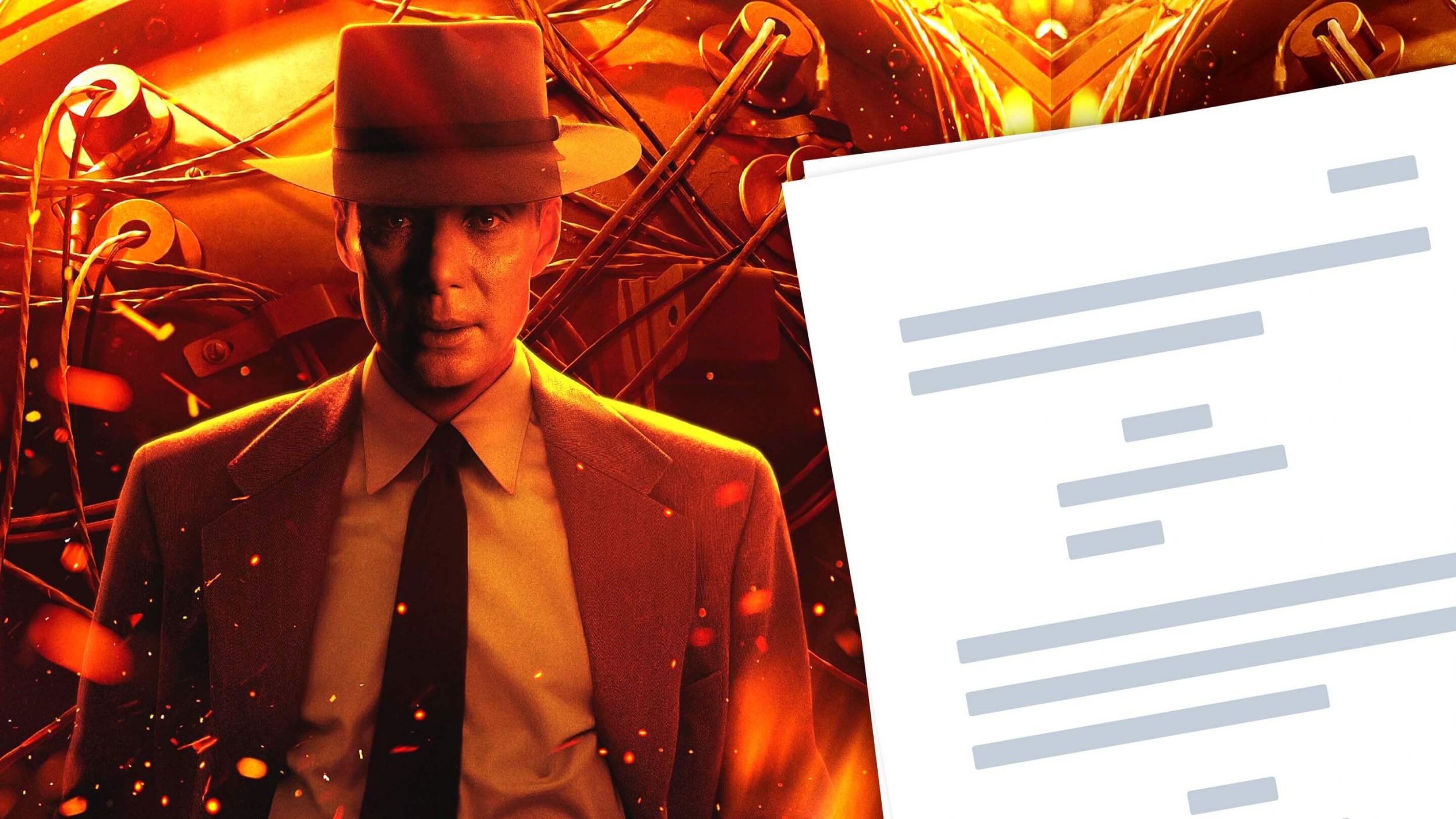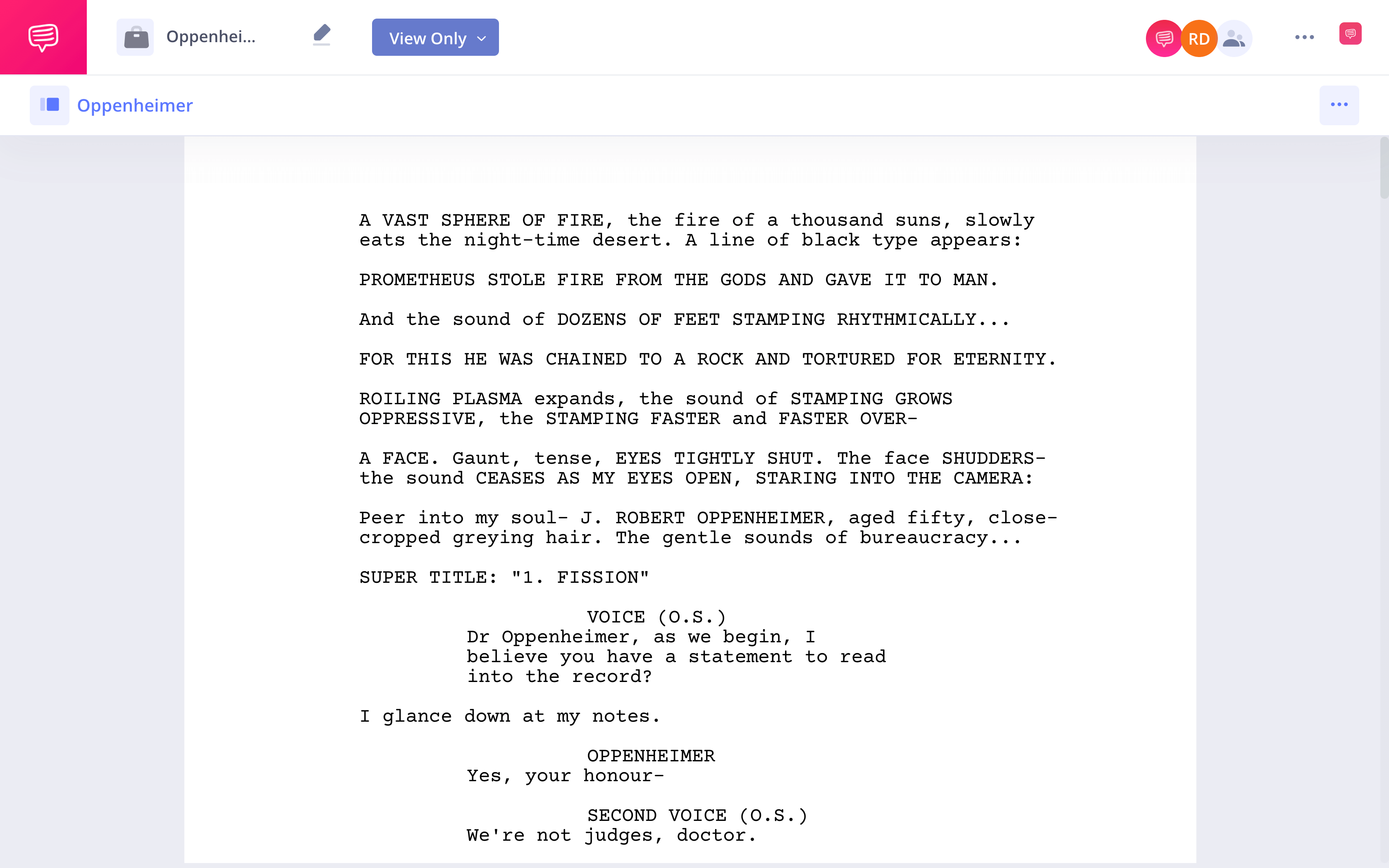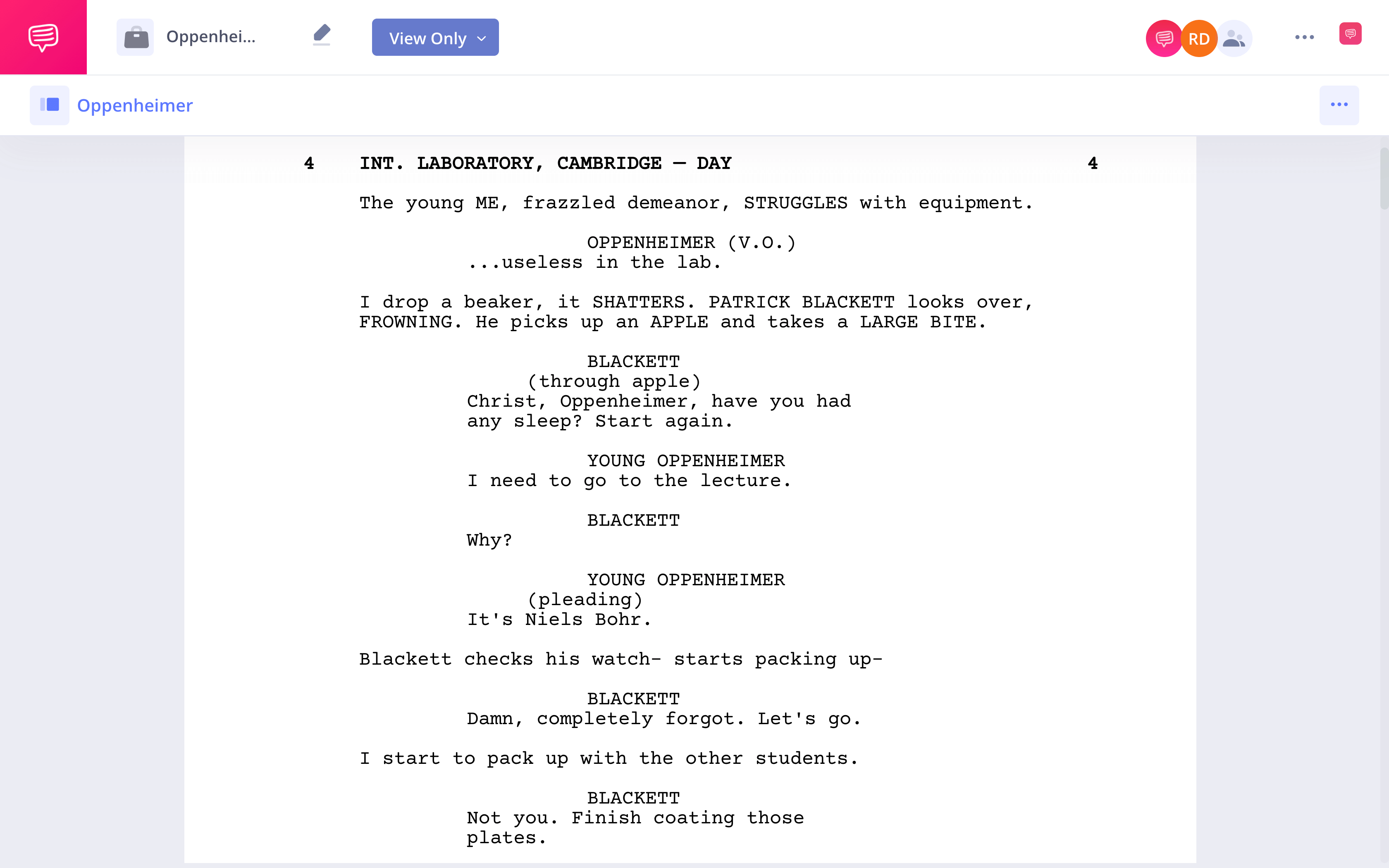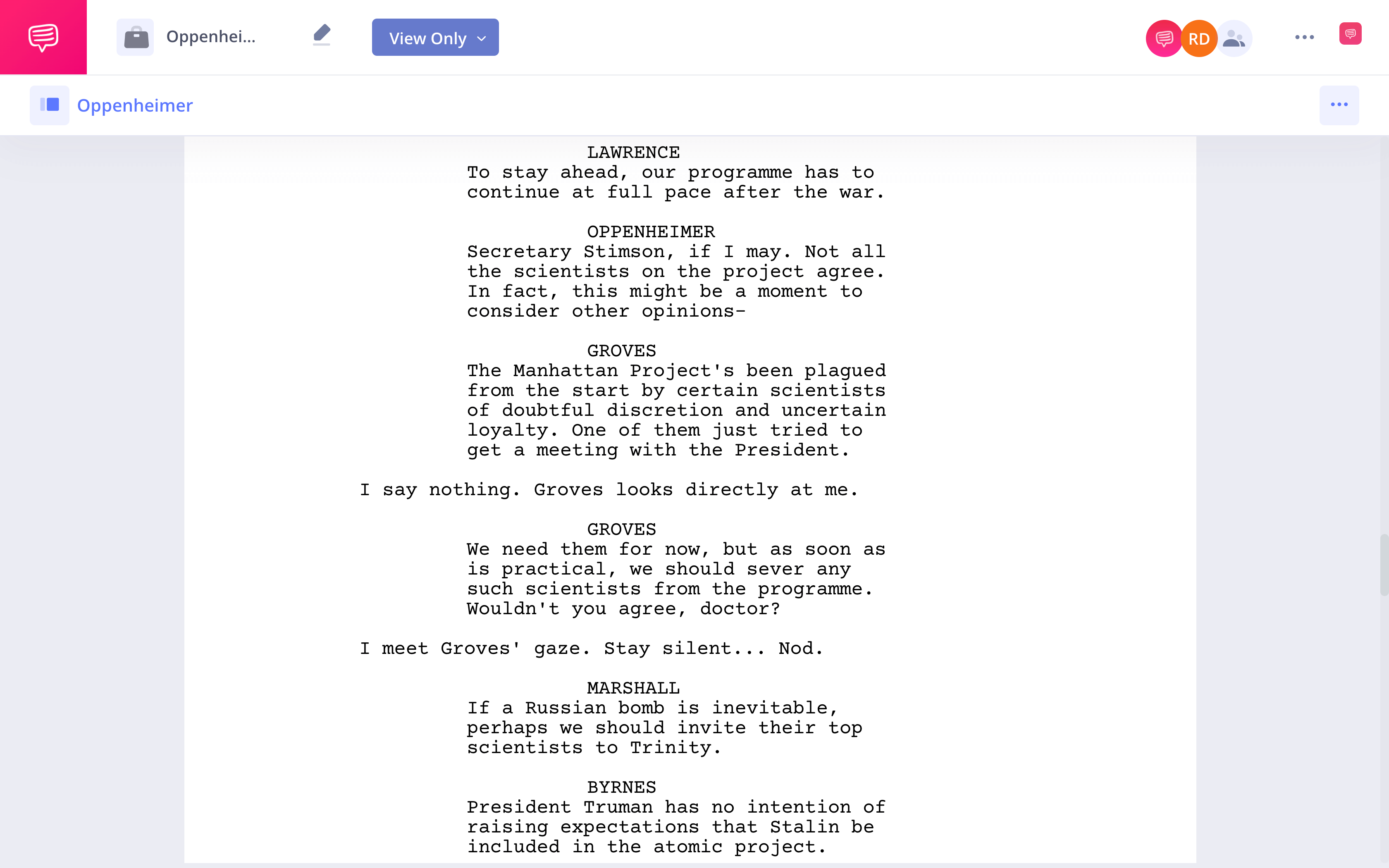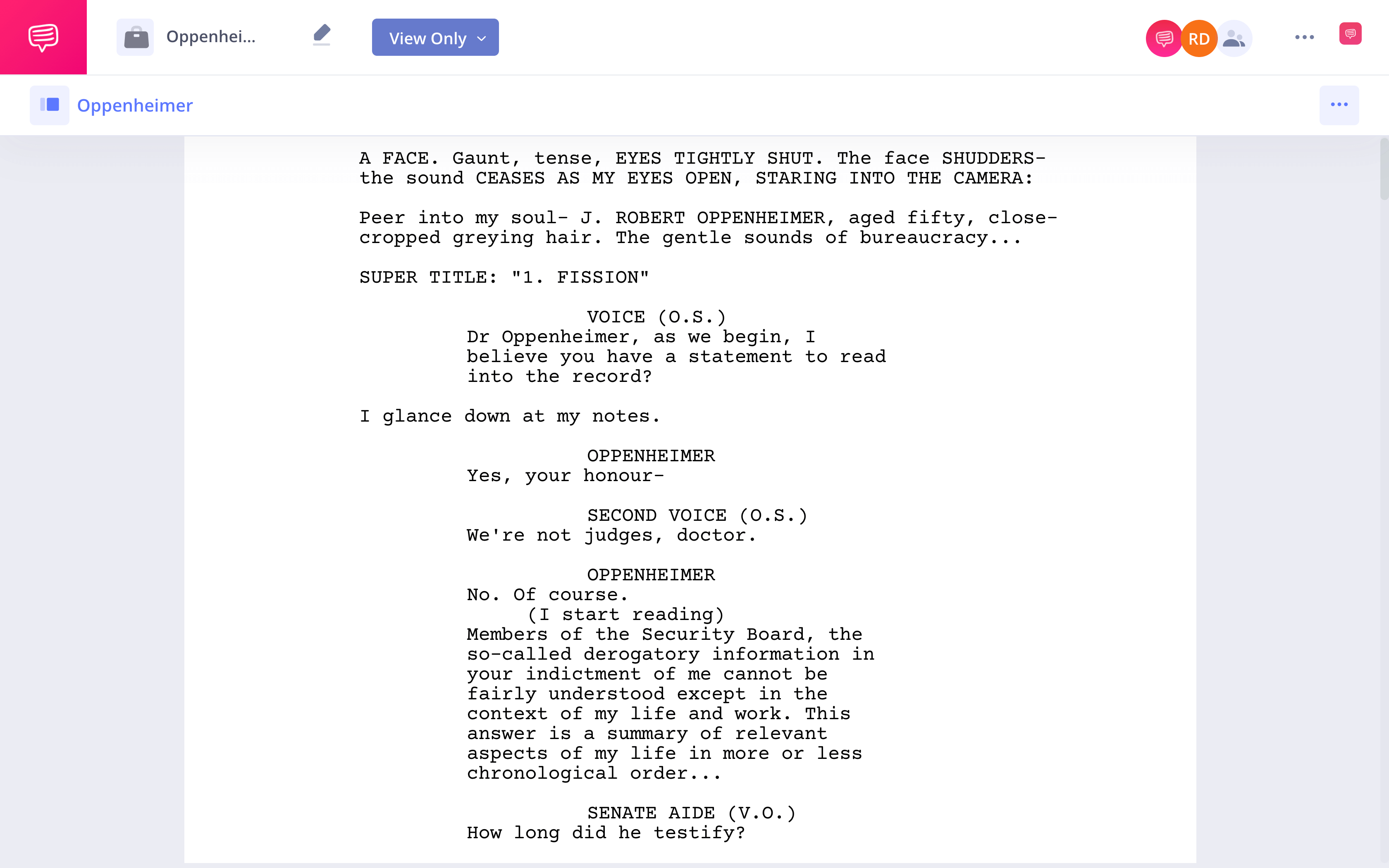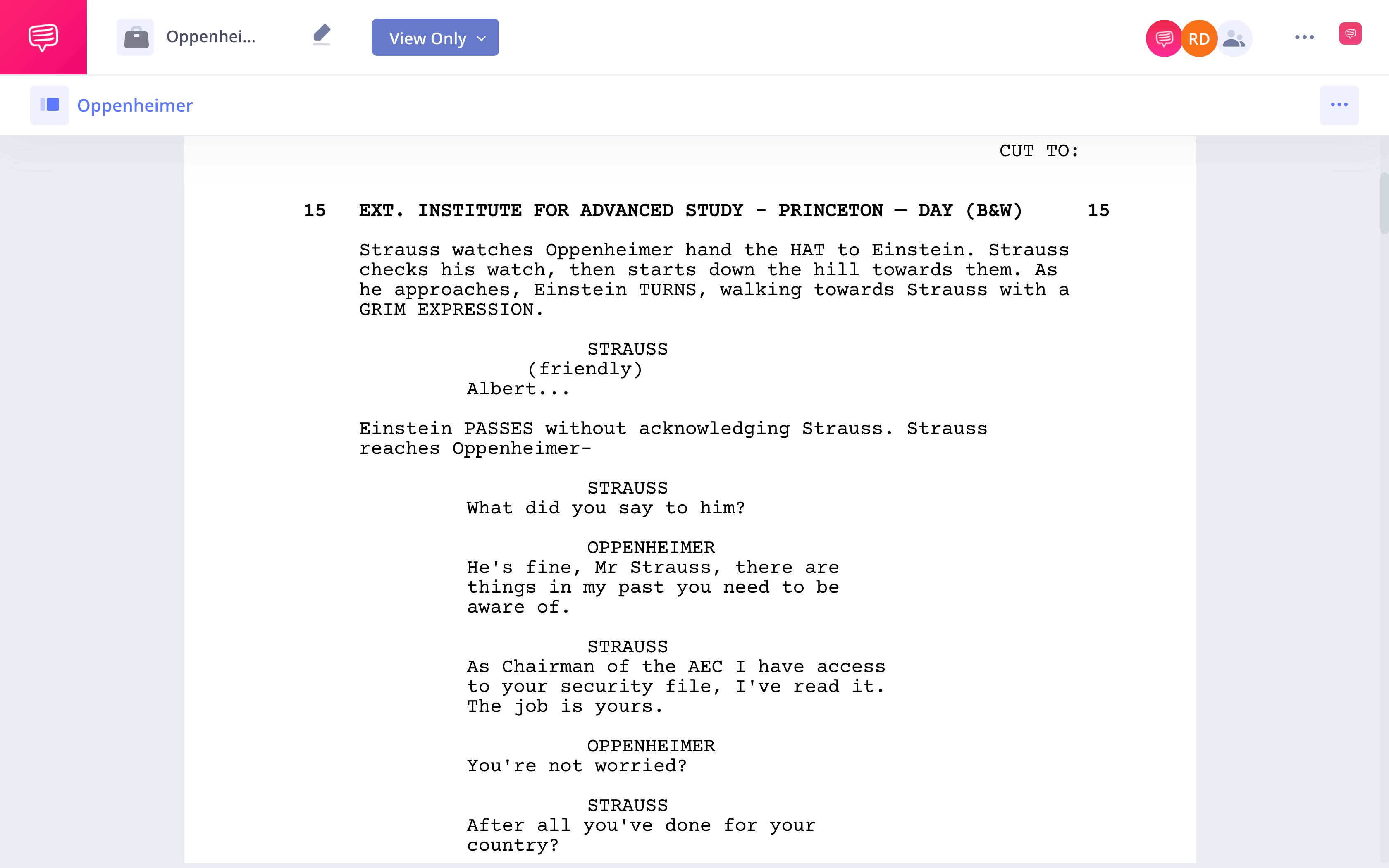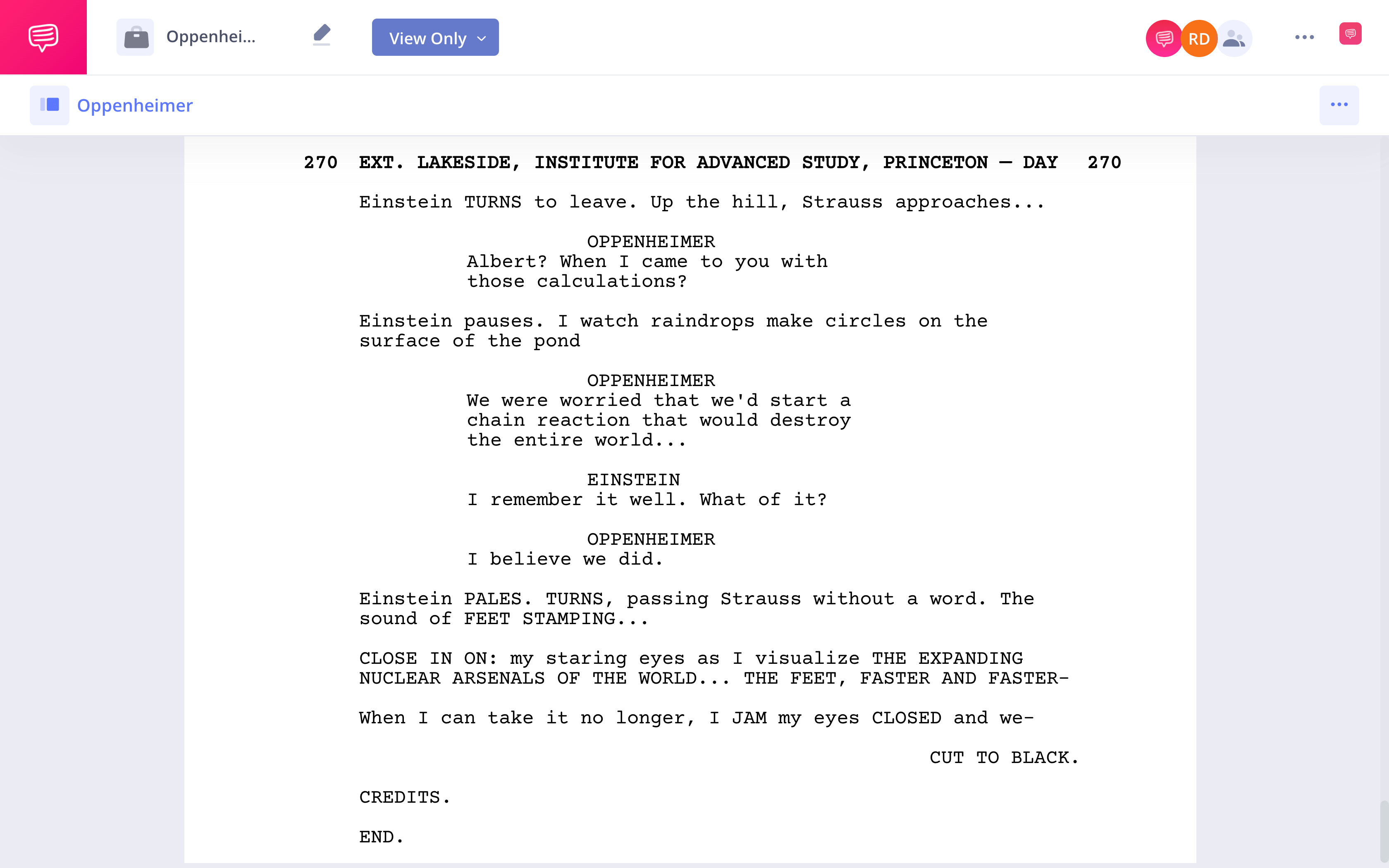I
t’s safe to say Oppenheimer is no typical biopic. The film leaps backwards and forwards through time, creating a nonlinear structure that stands apart from its counterparts in the genre. It should be unsurprising, then, that the Oppenheimer screenplay challenges conventions. By examining Christopher Nolan’s script for the movie, we can begin to appreciate just how intricate and unique the massive three-hour story is.
OPPENHEIMER SCRIPT
WHO WROTE OPPENHEIMER?
Screenplay by Christopher Nolan.
Christopher Nolan is one of the most celebrated and commercially successful filmmakers of the 21st century. He began his career making psychological thrillers like Following and Memento, and has gone on to write and direct blockbusters such as The Dark Knight, Inception, and Interstellar.OPPENHEIMER SCRIPT PLOT
OPPENHEIMER SUMMARY
Here is the Oppenheimer summary:
Exposition
J. Robert Oppenheimer is a doctoral student, a whiz at theoretical physics but plagued with anxiety and haunted by images of armageddon. He climbs the ranks in academia to become a celebrated professor at UC Berkeley.
Inciting Incident
Nuclear fission is discovered as fascism looms in Europe. Oppenheimer quickly realizes that fission could be used as a weapon.
Plot Point One
Despite Oppenheimer’s leftist ties, the US Army (represented by General Leslie Groves) brings the physicist in to helm the Manhattan Project, the mission to create the atomic bomb.
Rising Action
Oppenheimer navigates the increasingly restrictive red tape to assemble a team of crack scientists in Los Alamos. Meanwhile, though a series of flash forwards, Lewis Strauss prepares for a senate confirmation hearing and an older Oppenheimer fields an interrogation by an antagonistic Personnel Security Board.
Midpoint
Jean Tatlock, a communist with whom Oppenheimer was having an affair, commits suicide. In flashforwards, things go from bad to worse for the physicist as the Board grills him and his colleagues on his leftist ties.
Plot Point Two
After much suspense, the Trinity Test goes off without a hitch. Oppenheimer and his team have successfully detonated an atom bomb.
Build Up
The Security Board’s meetings are becoming more heated, and it is revealed that they are orchestrated by Strauss, who has a vendetta against Oppenheimer. Kitty Oppenheimer testifies.
Climax
Strauss’s nomination does not get past the senate due in large part to the scientific community’s condemnation of his treatment of Oppenheimer.
Finale
We finally hear the conversation between Einstein and Oppenheimer which Strauss obsessed over, believing Oppenheimer turned the scientist against him. Instead, the conversation is about the lasting effect of the Manhattan Project and the atomic bomb.
Oppenheimer Script
Oppenheimer’s unique perspective
A crucial element of Oppenheimer is the use of point-of-view. Throughout the film, Christopher Nolan alternates between perspectives, primarily those of Oppenheimer and Strauss.
In the film, the separation is emphasized through color. Oppenheimer’s “subject” scenes (as Nolan referred to them) are in color, while the Strauss scenes are in black and white. But how did Nolan delineate between perspectives in the script?
The answer lies in breaking a cardinal rule of modern, mainstream screenwriting.
Let’s take a look at a scene with Oppenheimer’s perspective, which we imported into StudioBinder’s screenwriting software. Click on the image to read it in its entirety.Oppenheimer Script PDF
Notice anything strange? Nolan wrote all the scenes with Oppenheimer’s perspective in first person.
First, a quick brush up on conventional screenplay conventions. Most screenwriting textbooks, as well as Hollywood industry professionals, will tell you that a screenplay is written in third-person. This is because a camera captures exteriority– it can’t tell us what a character is thinking.
But for Oppenheimer, Nolan deliberately throws out this rule, and it’s not hard to see why when watching the film. The color scenes are a character study, focusing tightly on Oppenheimer through extreme close-ups (which are even more extreme in IMAX).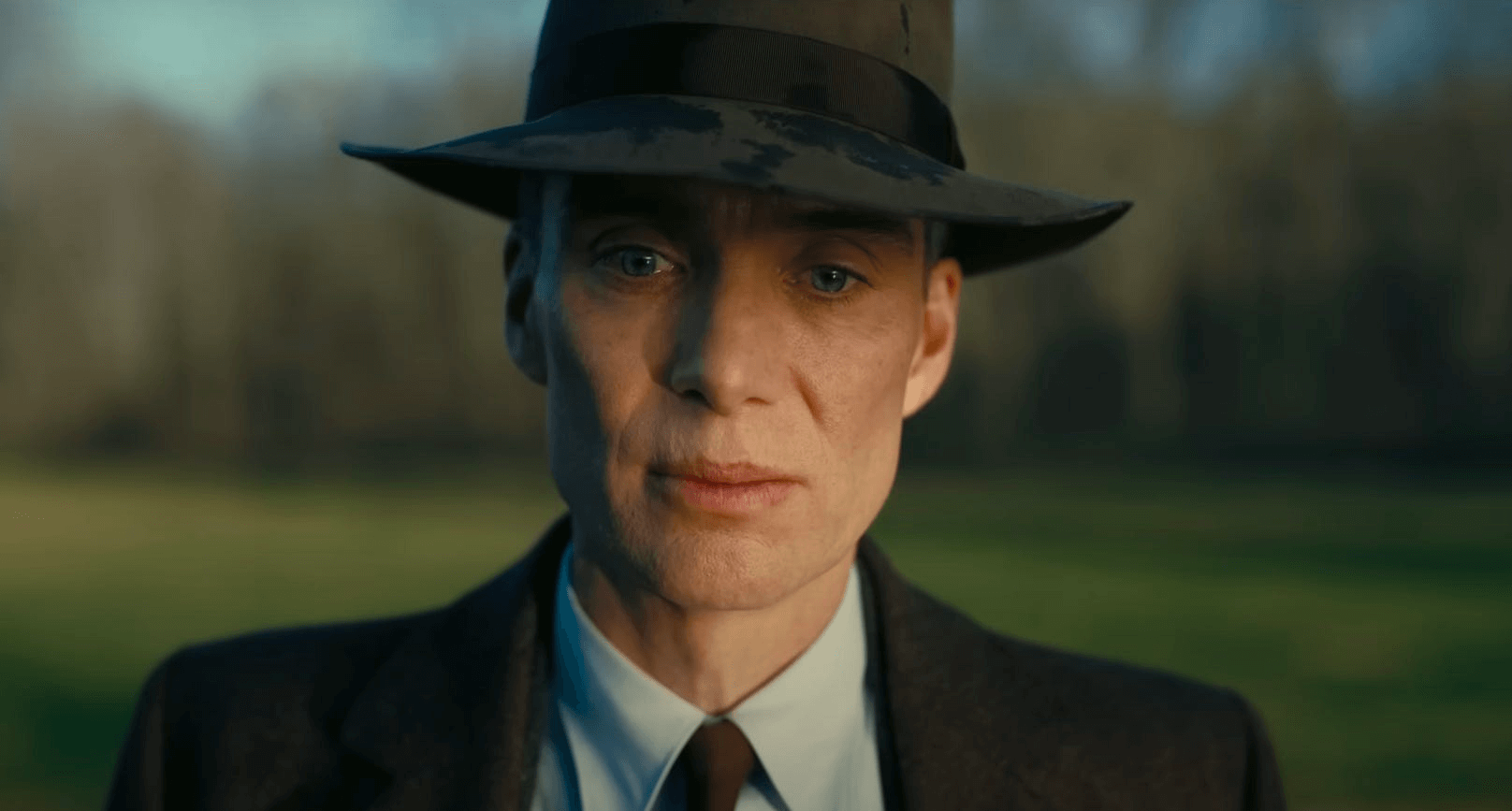
Oppenheimer close up
Nolan explains that though a first person script was an “Odd thing to do,” it served as “a reminder to me of how to shoot the film. It was a reminder to everybody involved in the project, ‘Ok, this is the point of view of every scene.’”
Furthermore, by using first person, Nolan signals to readers that this is not a story simply about the Manhattan project. It’s a more personal narrative, looking at the conflicted and often confounding interiority of a towering historical figure.
This ambiguity in Oppenheimer’s character, his opacity when it came to what he actually believed, is also represented in Nolan’s use of first person. While he’s using I, Me, and My, he’s still careful to largely stay out of Oppenheimer’s head. Take this scene, for example, where top US officials are weighing whether or not to use the atomic bomb on Japan.Oppenheimer script
This is a key moment for Oppenheimer– he can voice dissent for the use of the bomb or he can encourage it. Instead, he effectively says nothing, ushering platitudes to both sides. In the action, Nolan doesn’t give us any more insight. Oppenheimer simply “stay[s] silent… Nod[s].”
At its essence, Oppenheimer is a movie which tries to decipher the indecipherable man behind the atom bomb. Many of the most impactful lines of the movie emphasize this thesis– even his contemporaries were baffled and astounded by the physicist’s inner workings. Here are some Oppenheimer quotes:
- “When they've punished you enough, they'll serve you salmon and potato salad, make speeches, give you a medal, and pat you on the back telling you all is forgiven. Just remember, it won't be for you... it would be for them” - Einstein
- “You think because you let them tar and feather you that the world will forgive you? They won't.” - Kitty Oppenheimer
- “You are the man who gave them the power to destroy themselves. And the world is not prepared.” - Neils Bohr
- “Amateurs seek the sun. Get eaten. Power stays in the shadows.” - Lewis Strauss
- “Now I am become Death, the destroyer of worlds.” - Oppenheimer
Related Posts
Oppenheimer Script Takeaway #2
Oppenheimer script structure
It becomes almost immediately evident in Oppenheimer that the film will follow a nonlinear timeline. It’s a trick Nolan has used in his filmography as far back as Memento, and with Oppenheimer, he has perfected it.
Watching the film, one may guess that the parallel editing was a post-production decision. For the most part, however, Nolan lays out exactly how he wants to intercut scenes in his screenplay.
Take a look at the opening pages:
Oppenheimer full script
Already, different temporalities are being intertwined. We open on Oppenheimer’s testimony in front of the Security Board, and then cut ahead to Strauss’s testimony.
Notice that for Strauss’s scenes, Nolan uses italics. This is to help with the readability of the script, emphasizing which storyline is which. It’s a smart move for such a complex piece of writing.

Strauss in B&W
Both of these scenes, of course, happen long after the core storyline of the film– Oppenheimer’s path towards an atomic bomb. It’s a story within a story within a story: Strauss recalls the Board hearing, and the Board hearing recalls Oppenheimer’s life. So why would Nolan take this approach?
First, it is useful in a utilitarian sense. Nolan explains, “If you know that you have the ability to cross cut between other timelines, it’s very freeing [on set]. You can be a little more careless about your coverage. You can be more concerned about the individual moment.”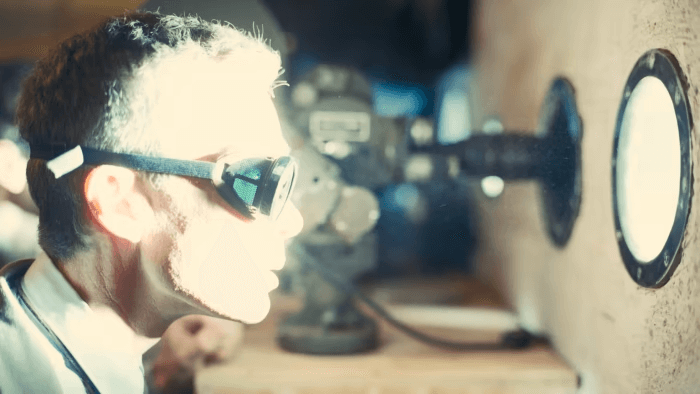
The big bomb
Instead, Nolan can create far more tension and build up to the Trinity Test, and have the section of the film after the bomb be much more brief and follow Strauss and Oppenheimer’s hearings when they are at their most tense.
This intercutting strategy carries over to our next point: the ending of the film.
Related Posts
Oppenheimer Script Takeaway #3
Oppenheimer Ending Explained
The last hour of Oppenheimer is a high-wire act. As we’ve noted, the bomb blast is the one big spectacle in the film. Typically, the big bang in a movie would be found at the climax, but Nolan pushes it up earlier.
The Trinity Test happens around the break into the third act, though with a movie like Oppenheimer, it’s hard to break the plot up into a conventional three act structure. Either way, there is about an hour left in the movie when the bomb explodes.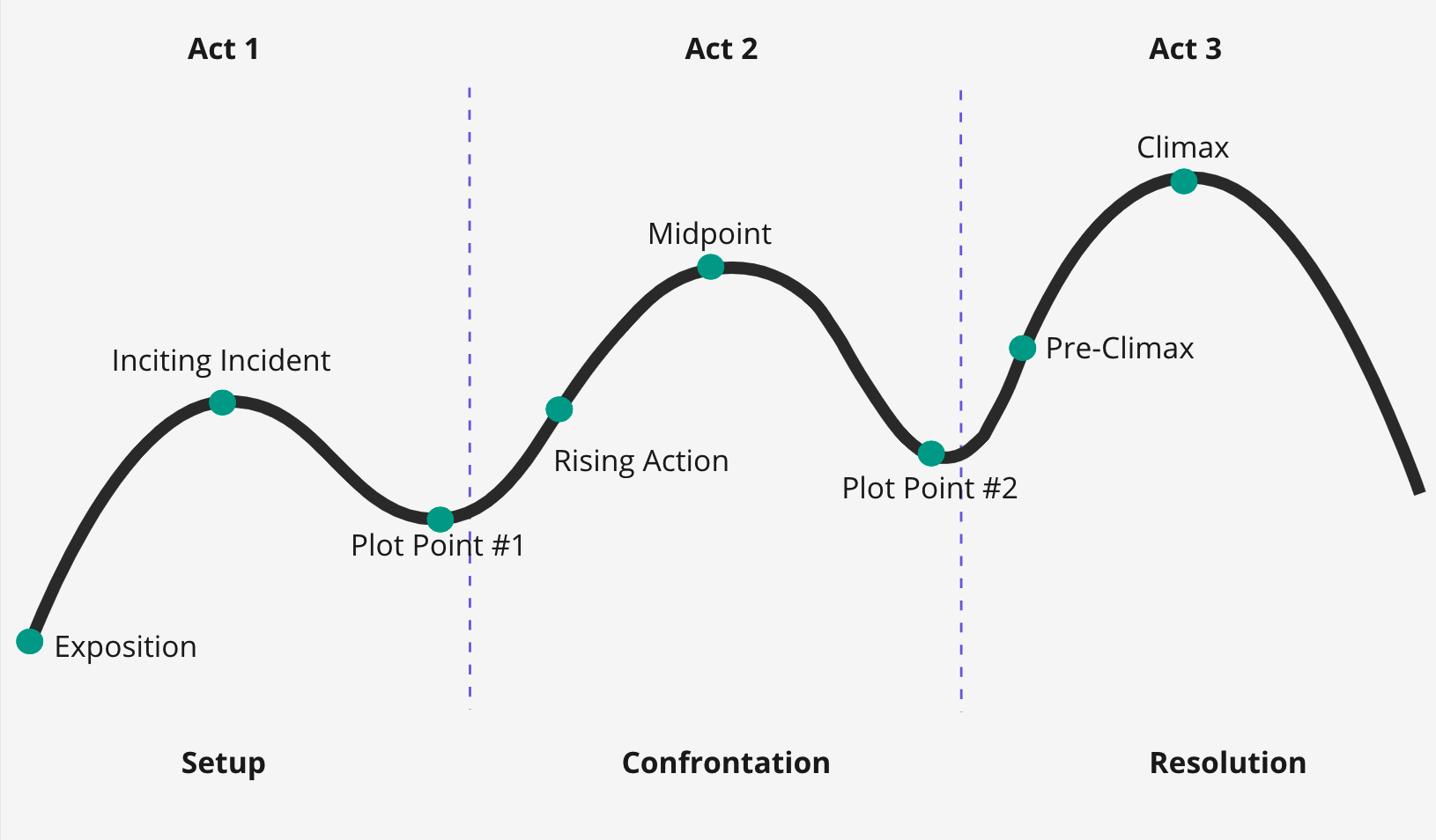
Three act structure • Oppenheimer script
So how does Nolan keep up the momentum and maintain the audience’s interest? Back to intercutting. Nolan has been getting the audience invested in both Strauss’s hearing and Oppenheimer’s security review from the first page of the script.
By doing this, Nolan has implicitly signaled to the audience that the true backbone of the story are these hearings, not the building of the bomb.
Crucially, Nolan has also repeatedly included one key scene. Check it out on the page:
Oppenheimer movie script
Initially, it doesn’t seem like there’s much to the moment. Oppenheimer redirects Strauss’s attention to another subject. But as the moment appears again and again in the film, it becomes clear that it represents the root of Strauss’s resentment towards Oppenheimer.
As he reiterates throughout the movie, Strauss believes that Oppenheimer turned the scientific community against him. This brief encounter with Einstein, in Strauss’s mind, was indicative of Oppenheimer’s sabotage of his reputation.
But in the final scene of the film, we finally learn what actually was said between Oppy and Albert:
Oppenheimer script PDF
As one of Strauss’s underlings predicted, the two physicists weren’t talking about Strauss at all, but something more important.
This final scene works to tie up not just the Strauss storyline, but also that of Oppenheimer and the atomic bomb. We finally see that Oppenheimer may in fact understand the full repercussions of his actions, and he may feel some regret.
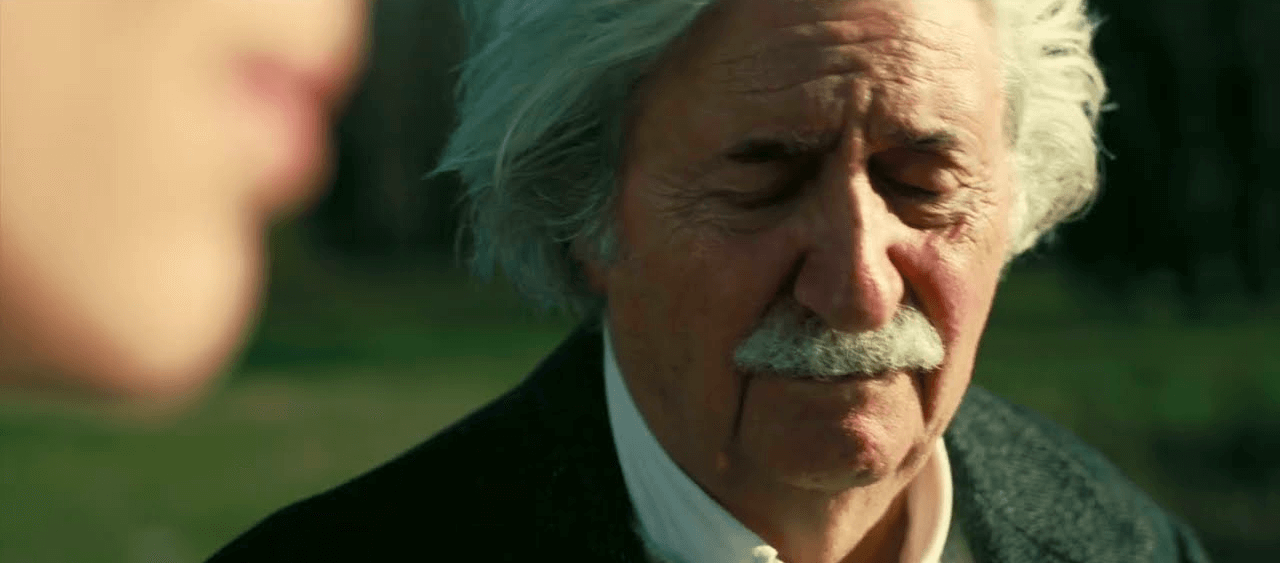
Einstein
The ending of Oppenheimer highlights what works so well in the movie as a whole. This is a biopic which is an open-ended investigation into not just a man but an entire pivotal epoch in American history. It all started with a script.
Related Posts
UP NEXT
Read and download more scripts
Oppenheimer is one of the most successful biopics of all time, and that’s no accident. If you want to continue learning from screenplays, we have other Nolan titles like Inception, The Dark Knight, and Tenet in our screenplay database. Browse and download PDFs for all of our scripts as you read, write and practice your craft to become the next great screenwriter.
